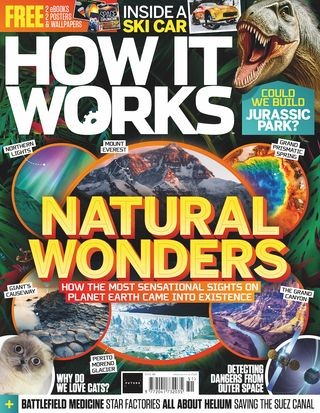How Does Time Work In Space Compared To Earth? Time, a fundamental aspect of our existence, is perceived differently depending on where you are in the universe, a concept explored in detail here at COMPARE.EDU.VN. This article delves into the fascinating differences in the flow of time on Earth versus in space, examining the influence of gravity, velocity, and relativistic effects on time perception, offering comprehensive comparison and insights into how atomic clocks and space-time continuum affect time, providing invaluable insights for decision-making and comparative understanding.
1. Understanding Time on Earth
On Earth, we generally perceive time as a constant, measured by the rising and setting of the sun, the change of seasons, and the ticking of clocks. But even on our planet, time isn’t perfectly uniform.
1.1 Dynamic Time vs. Atomic Time
Historically, time was measured dynamically, based on the Earth’s rotation. A day was divided into 24 hours, each hour into 60 minutes, and each minute into 60 seconds. However, the Earth’s rotation isn’t constant; it slows down by about 30 seconds every 10,000 years due to tidal friction and other factors. This necessitates the introduction of leap seconds to keep our clocks aligned with the Earth’s rotation.
For a more precise measurement, we use atomic time, which relies on the energy transitions within atoms, typically cesium. One second is defined as 9,192,631,770 transitions within a cesium atom. Atomic clocks are incredibly accurate, losing only a tiny fraction of a second over millions of years.
1.2 The Role of Atomic Clocks on Earth
Atomic clocks are crucial for many technologies we rely on daily. The Global Positioning System (GPS), for example, depends on atomic clocks in satellites to accurately determine positions on Earth. These clocks are so precise that they can measure time differences down to nanoseconds.
2. Time in Space: A Different Perspective
In space, time behaves differently than on Earth. The primary reason for this is Einstein’s theory of relativity, which posits that time is relative and can be affected by gravity and velocity.
2.1 Einstein’s Theory of Relativity
Albert Einstein revolutionized our understanding of time with his theory of relativity. He proposed that the speed of light is constant for all observers, regardless of their motion, and that space and time are intertwined in a fabric called space-time.
2.1.1 Special Relativity
Special relativity deals with the relationship between space and time for objects moving at constant speeds. One of its key predictions is time dilation, which means that time passes more slowly for objects in motion relative to a stationary observer. The faster an object moves, the more pronounced the time dilation effect becomes.
2.1.2 General Relativity
General relativity extends special relativity to include gravity. It describes gravity not as a force but as a curvature of space-time caused by mass and energy. According to general relativity, the stronger the gravitational field, the slower time passes. This means that time passes more slowly at sea level than on a mountaintop, because the gravitational field is stronger at sea level.
2.2 Time Dilation in Space
Time dilation has significant implications for space travel. Astronauts on the International Space Station (ISS), for example, experience both time dilation due to their velocity (special relativity) and time dilation due to their distance from Earth’s gravitational field (general relativity).
2.2.1 Velocity Time Dilation
The ISS orbits Earth at a speed of approximately 17,500 miles per hour (28,000 kilometers per hour). This high velocity causes time to pass slightly slower for the astronauts on board compared to people on Earth. However, the effect is small, amounting to only a few microseconds over a year.
2.2.2 Gravitational Time Dilation
The ISS is located about 250 miles (400 kilometers) above Earth’s surface, where the gravitational field is slightly weaker than on Earth. This causes time to pass slightly faster on the ISS compared to Earth. This effect is also small but noticeable.
2.2.3 Combined Effects
The combined effects of velocity and gravitational time dilation mean that astronauts on the ISS age slightly slower than people on Earth. However, the difference is so small that it’s not noticeable in everyday life.
2.3 Experiments Confirming Time Dilation
Several experiments have confirmed the predictions of time dilation. One of the most famous was the Hafele-Keating experiment in 1971, in which atomic clocks were flown around the world on commercial airplanes. The clocks on the airplanes recorded slightly different times than clocks on the ground, in agreement with Einstein’s theory.
Another experiment, NASA’s Gravity Probe B, measured the curvature of space-time around Earth. The results confirmed that gravity affects space and time, as predicted by general relativity.
3. Comparing Time on Earth and in Space
To understand how time works differently in space compared to Earth, let’s compare the key factors that influence time in each environment.
3.1 Gravity’s Influence
On Earth, gravity is relatively constant, although it varies slightly depending on location and altitude. In space, gravity can vary dramatically, depending on the proximity to massive objects like planets, stars, and black holes.
| Factor | Earth | Space |
|---|---|---|
| Gravity | Relatively constant | Varies significantly |
| Effect on Time | Time passes at a relatively constant rate | Time dilation near massive objects |


3.2 Velocity’s Impact
On Earth, most objects move at relatively slow speeds compared to the speed of light, so velocity time dilation is negligible. In space, objects can move at very high speeds, leading to significant time dilation effects.
| Factor | Earth | Space |
|---|---|---|
| Velocity | Relatively slow | Can be very high |
| Effect on Time | Negligible time dilation | Significant time dilation at high speeds |
3.3 Space-Time Curvature
On Earth, space-time is relatively flat, but in space, it can be highly curved near massive objects. This curvature affects the paths of objects and light, as well as the flow of time.
| Factor | Earth | Space |
|---|---|---|
| Space-Time Curvature | Relatively flat | Highly curved near massive objects |
| Effect on Time | Minimal effect | Significant effect on the flow of time |
4. Practical Implications for Space Travel
The differences in how time works in space compared to Earth have practical implications for space travel, especially for long-duration missions.
4.1 Navigation and Communication
Accurate timekeeping is essential for navigation and communication in space. GPS satellites, for example, must account for time dilation effects to provide accurate positioning data. Similarly, spacecraft communicating with Earth must adjust for the time delay caused by the finite speed of light.
4.2 Astronaut Health
Long-duration space missions can have significant effects on astronaut health, including changes in bone density, muscle mass, and cardiovascular function. Time dilation may also play a role in these effects, although its impact is still not fully understood.
4.3 Future Space Missions
As we plan for future space missions to Mars and beyond, understanding the effects of time dilation will become even more important. These missions will involve longer travel times and greater exposure to the unique conditions of space, making accurate timekeeping and a thorough understanding of relativistic effects crucial for mission success.
5. The Ongoing Quest to Understand Time
Despite the progress we’ve made in understanding time, many mysteries remain. Scientists are still working to unravel the fundamental nature of time and its relationship to space, gravity, and the universe as a whole.
5.1 Quantum Gravity
One of the biggest challenges in modern physics is reconciling general relativity with quantum mechanics, the theory that governs the behavior of matter at the atomic and subatomic levels. A theory of quantum gravity would provide a unified description of gravity and quantum mechanics, potentially shedding new light on the nature of time.
5.2 The Arrow of Time
Another mystery is why time seems to flow in only one direction, from past to future. This is known as the arrow of time. One explanation is that it’s related to the second law of thermodynamics, which states that entropy, or disorder, always increases over time. However, this explanation is not universally accepted, and the arrow of time remains a topic of active research.
5.3 The Nature of Consciousness
Finally, the relationship between time and consciousness is a profound and perplexing question. How do we perceive time, and why does it seem to pass at different rates depending on our experiences? These questions are at the forefront of research in neuroscience, psychology, and philosophy.
6. Conclusion: Time is Relative
In conclusion, time is not the absolute and unchanging entity that Newton envisioned. Instead, it’s a relative quantity that can be affected by gravity, velocity, and the curvature of space-time. Understanding how time works differently in space compared to Earth is crucial for space travel, navigation, and our ongoing quest to understand the universe. Whether it’s dynamic or atomic time, the implications of measuring time are significant and constantly being explored.
For more detailed comparisons and comprehensive analyses of various topics, visit COMPARE.EDU.VN. Our platform offers in-depth evaluations to assist you in making informed decisions.
7. FAQs About Time in Space Compared to Earth
7.1 Is time travel possible?
While the laws of physics do not completely rule out the possibility of time travel, it remains highly speculative and faces significant theoretical and practical challenges.
7.2 How do atomic clocks work?
Atomic clocks measure time by using the energy transitions within atoms, typically cesium. These transitions occur at very precise frequencies, making atomic clocks extremely accurate.
7.3 What is space-time?
Space-time is a four-dimensional fabric that combines the three dimensions of space with the dimension of time. It’s the arena in which all physical events take place.
7.4 How does gravity affect time?
According to Einstein’s theory of general relativity, the stronger the gravitational field, the slower time passes. This is known as gravitational time dilation.
7.5 What is time dilation?
Time dilation is the phenomenon in which time passes at different rates for observers in different frames of reference, such as those moving at different velocities or in different gravitational fields.
7.6 Do astronauts age differently in space?
Yes, astronauts on long-duration space missions age slightly slower than people on Earth due to the combined effects of velocity and gravitational time dilation.
7.7 How is time measured in space?
Time in space is measured using atomic clocks, which are incredibly accurate and can account for the effects of time dilation.
7.8 What is the arrow of time?
The arrow of time is the concept that time seems to flow in only one direction, from past to future. The reason for this is still a topic of active research.
7.9 What is quantum gravity?
Quantum gravity is a theoretical framework that seeks to reconcile general relativity with quantum mechanics, providing a unified description of gravity and quantum phenomena.
7.10 Why is understanding time important for space travel?
Understanding how time works differently in space compared to Earth is crucial for navigation, communication, astronaut health, and the success of future space missions.
8. Call to Action
Ready to explore more fascinating comparisons and make informed decisions? Visit COMPARE.EDU.VN today! Our platform provides detailed, objective analyses across a wide range of topics, ensuring you have the information you need to choose wisely.
COMPARE.EDU.VN
Address: 333 Comparison Plaza, Choice City, CA 90210, United States
Whatsapp: +1 (626) 555-9090
Website: compare.edu.vn
